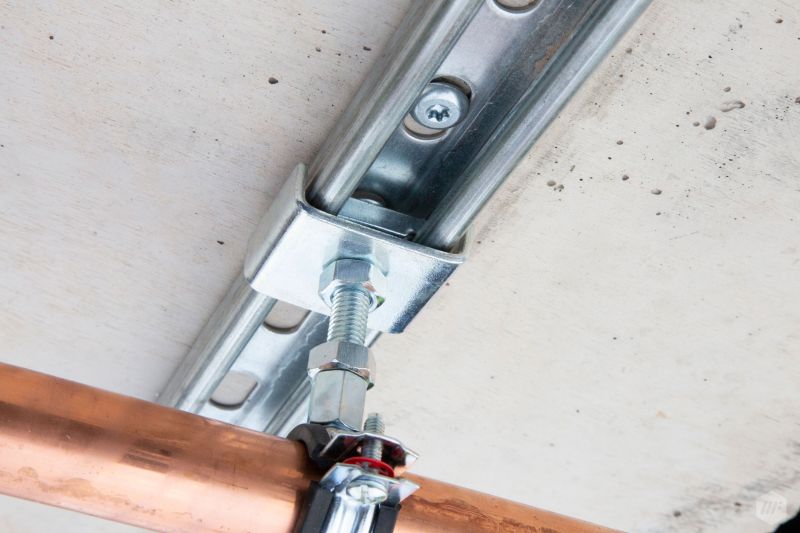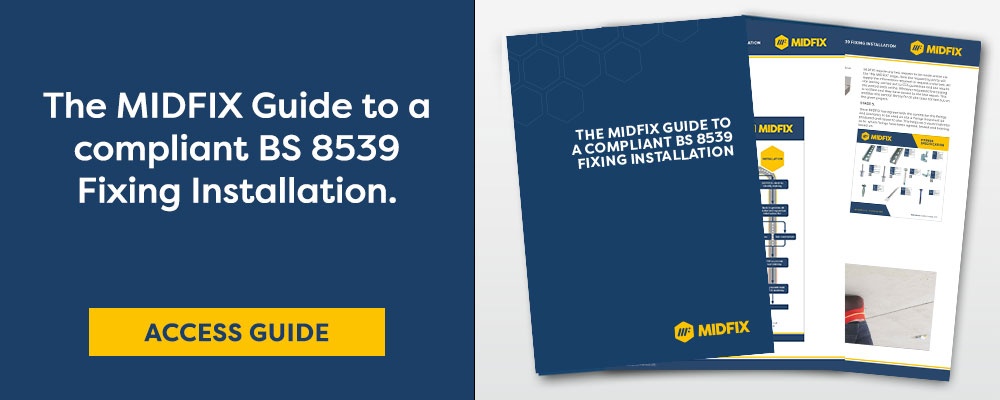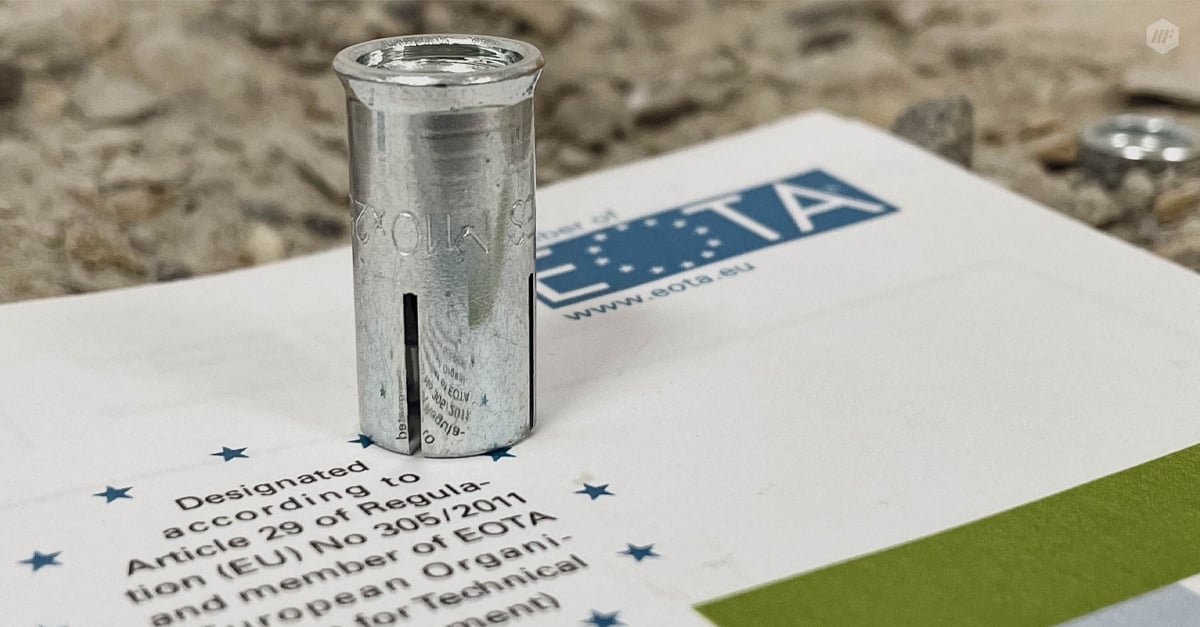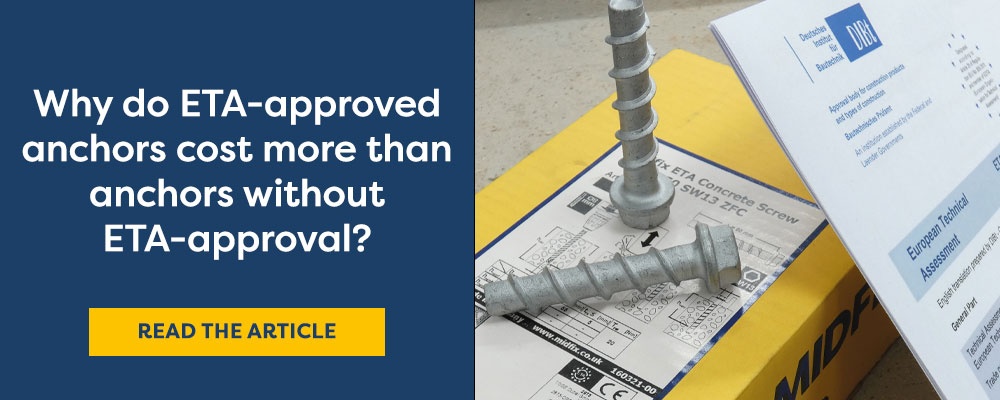This article will give you a better understanding of what a Fixings and Anchors Policy is, its importance, and why you might need one. Simply click on the links below to navigate:
What is a Fixings and Anchors Policy?
What should you include in a Fixings and Anchors Policy?
Why is the Fixings and Anchors Policy important?
So, should you write a Fixings and Anchors Policy?
If you are starting a Mechanical and Electrical (M&E) project, you might be wondering what steps you should ensure will be taken for it to go as smoothly as possible.
You want to feel you’ve done a great job and considered, as well as mitigated, all possible safety risks and errors. What do you need to do to alleviate any bumps along the way and come out the other end with a successful project?
For starters, the British Standard BS 8539:2012 Code of Practice is a comprehensive guide that was developed by several industry bodies to set out a safe standard procedure for selecting, supplying, installing, and testing post-installed anchors for concrete and masonry. If fully adopted, the goal is to implement a safe installation using the correct anchor, which will reduce construction failures and prevent further injuries and deaths.
Though not legislative, it may be referred to in a court of law in the event of an accident or building failure (CFA, 2020), and if this does happen, the ‘specifier’ in the process i.e. the person who selects the anchor, could be liable.
Steven Grkinic, Head of Sales at MIDFIX and technical manager, explained: “Even if something is not legally binding, if you are not following a code of practice of some kind, then you are classed as negligent. So, unless you have a very robust internal procedure, which nobody has in this area, then you should be following the code of practice.”
By now, assuming you are someone in the M&E industry, you should know that it’s always best to adhere to codes of practice. The BS 8539 applies to everybody involved in the supply chain. But are you aware that you might also need a Fixings and Anchors Policy for anchor-related projects?
 "If you don’t have the evidence for it, you haven’t done it. It's basically saying, everything that the BS 8539 says we should do, this is how we’ve done it, who does it and when.”
"If you don’t have the evidence for it, you haven’t done it. It's basically saying, everything that the BS 8539 says we should do, this is how we’ve done it, who does it and when.”
Stevan Grkinic
What is a Fixings and Anchors Policy?
Following some anchor failures in recent years including one that resulted in a fatality in Ireland, as well as major tragedies like the Grenfell tower fire, there is a growing desire in the industry to improve governance at site level to ensure uniformity, traceability, and a more compliant future.
The Fixing and Anchors Policy is one of the stepping stones being developed in an attempt to reach these goals. While the BS 8539 affects just about every stakeholder, including the manufacturer, supplier, supervisors, etc., the Fixings policy gives the contractor their specific responsibilities under the standard.
The policy’s purpose is to challenge you to demonstrate that the structure you will install can take the service load applied to it and that the supports and anchors are fit for purpose. This is vital; anchors are quite literally the component that holds up the rest of the structure and they are needed to prevent the collapse of any installation. Unfortunately, they don’t always get the attention that is warranted due to time constraints and supply issues, and this could lead to some unsafe or far from ideal installations.
What should you include in a Fixings and Anchors Policy?
Usually led by the Tier 1 contractor in the supply chain, the policy should outline that you can provide the following information and how: the performance data of the applicable anchors/fixings, for example, if they haven’t been ETA (European Technical Assessment) approved, the loading information from the designer, that the installers and supervisors are fully trained and competent to install and sign off the selected anchor, and the information related to the anchors from the supply chain partner. Generally, a senior member from the health & safety or quality assurance teams will write the policies.
The Fixings policy is, in some ways, a simplified version of the BS 8539, that will help the company i.e. the contractor, ensure that, when it’s filtered down to the site, the suitable anchor is selected, that it’s supplied and installed correctly, and if any testing is required, that is done correctly. If they follow those four stages, they will have a compliant installation at the end, and more importantly, they will have the evidence to prove what they’ve installed is fit for purpose.
Why is the Fixings and Anchors Policy important?
But why is it so important to go through such rigorous procedures? Well, the answer is simple; because it could save lives, or at the very least, prevent some serious injuries. In this line of work, most installations are overhead and classed as ‘critical applications’ because of the seriousness and potential to be fatal. But it is particularly key with anchor installations, not only because the survival of the rest of the structure/installation depends largely on the anchor’s, but also because: they are sometimes prone to deterioration over time and it may not always be visible or identifiable, the failure of one anchor could cause a domino effect and lead to the failure of others as they take more weight, and because of their low cost, they’re often neglected and not much thought goes into the selection of the anchor due to being left until the last minute.

“Anchors are so important because they are the interface between the services that we are holding up and the substrate; they are the bit that holds the two together, and a lot of the time they are very subject to the quality of the installer,” explained the industry expert.
In detail, the policy should set out how the anchor is specified and who does so (it could be a third party, but must be someone who is duly qualified), and the importance of sticking to the specification, or if a change is to occur to that specification, how that change management is handled. There should also be an emphasis on competent installers and supervisors; the BS 8539 states that competency is achieved through training, so the policy should list out a training program for them and their subcontractors.


“It’s so important that everybody is well-trained because the installer is the biggest variable factor. We know how the anchor performs because it is ETA approved, it’s got testing behind it – what we don’t know is how the person doing the installation performs - most anchor failures are not anchor failures; they’re installation errors,” said Mr. Grkinic.
He continued: “And then finally, the policy should state that we either want all of our anchors to be proof tested; if that’s the case then this is the type of company, this is the qualification that we need from the person doing the testing on-site.”
These key points all drive home the importance of a dutiful installation. If you are aware of all this and have considered it during your projects, you may be thinking ‘but if I know I’ve followed the BS 8539 and done my due diligence, why would I need a Fixings and Anchors Policy as well?’. You don’t have to, but if you don’t, you won’t have a ‘leg to stand on’, so to speak. How do you intend to prove that you have?
Mr. Grkinic said: "if you don’t have the evidence for it, you haven’t done it. It's basically saying, everything that the BS 8539 says we should do, this is how we’ve done it, who does it and when.”
Should you be asked for evidence that your installation coincided with the BS 8539, you will have it at the ready. The policy will essentially act as a proof document that you’ve done everything per the Code of Practice, specifically in relation to your project/site.
“By following that process, should something occur – well, first of all, it shouldn’t occur, because it limits the possibility of anything happening - but should something occur and you’ve done everything that you said you were going to do in your policy, it basically passes the book onto something else, because something else has gone wrong. You’re covered because you’ve followed the instructions to the letter,” explained Mr. Grkinic.
So, should you write a Fixings and Anchors Policy?
On top of everything that’s been mentioned, being conscientious during the installation process comes with knock-on effects and benefits such as saving on costs because you did everything right the first time. Who wouldn’t want that? All in all, although it may seem tedious at first to go to such great lengths before even starting your project, following the code of practice and writing the policy could save you a significant amount of time, effort, and money in the long run.
For the Fixings policy, you can start by creating a template that would work for most projects – and then as you go along, you can simply tweak it to the needs of each specific project. You will have proof that you’ve done everything in the safest and most efficient way possible and will likely get it right from the first try – don’t underestimate the importance of being responsible!






.png?width=1200&name=MicrosoftTeams-image%20(362).png)